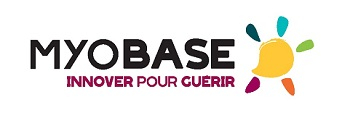Détail de la revue
The Cochrane database of systematic reviews |
Documents disponibles dans cette revue (15)
 trié(s) par (Date de parution décroissant(e), Date de parution décroissant(e), Système de projection du document croissant(e)) | Mettre toutes les notices dans le panier | Faire une suggestion | Ajouter un critère de recherche
trié(s) par (Date de parution décroissant(e), Date de parution décroissant(e), Système de projection du document croissant(e)) | Mettre toutes les notices dans le panier | Faire une suggestion | Ajouter un critère de recherche
Article
Dalmia S ; Sharma R ; Ramaswami U ; Hughes D ; Jahnke N ; Cole D ; Smith S ; Remmington T | 12/12/2023
Article
Jones K ; Hawke F ; Newman J ; Miller JA ; Burns J ; Jakovljevic DG ; Gorman G ; Turnbull DM ; Ramdharry G | 24/05/2021
Article

Article
Wadman RI ; van der Pol WL ; Bosboom WM ; Asselman FL ; van den Berg LH ; Iannaccone ST ; Vrancken AF | England | 01/2020MAIN RESULTS: The review authors found 10 randomised, placebo-controlled trials of treatments for SMA types II and III for inclusion in this review, with 717 participants. We added four of the trials at this update. The trials investigated creat[...]
Article
Wadman RI ; van der Pol WL ; Bosboom WM ; Asselman FL ; van den Berg LH ; Iannaccone ST ; Vrancken AF | England | 12/2019Résumé extrait de la "Cochrane Library" Background Spinal muscular atrophy (SMA) is caused by a homozygous deletion of the survival motor neuron 1 (SMN1) gene on chromosome 5, or a heterozygous deletion in combination with a point mutation in [...]
Article

Article

Article
Silva IS ; Pedrosa R ; Azevedo IG ; Forbes AM ; Fregonezi GA ; Dourado Junior ME ; Lima SR ; Ferreira GM | England | 09/2019
Article
Bell JM, Auteur ; Shields MD ; Watters J ; Hamilton A ; Beringer T ; Elliott M ; Quinlivan R ; Tirupathi S ; Blackwood B | 2017
Article

Article




